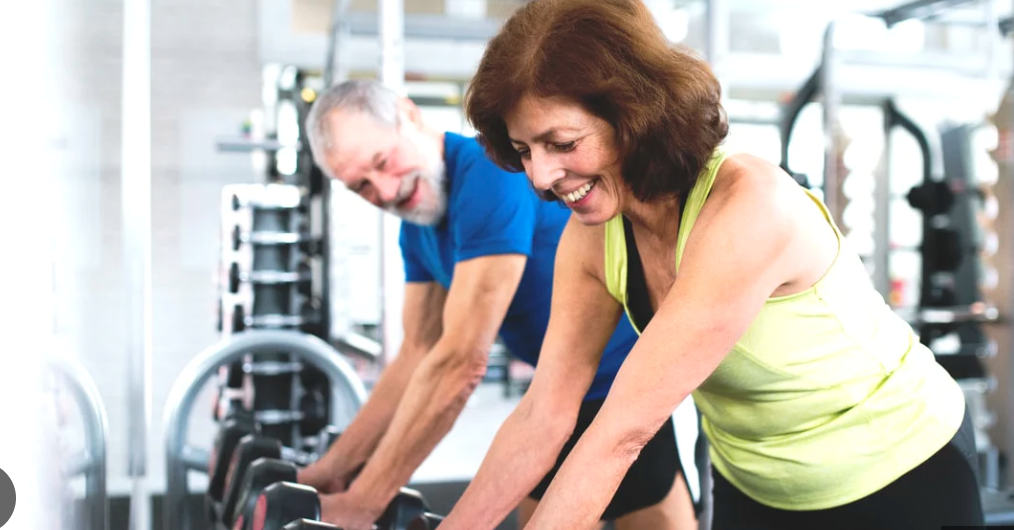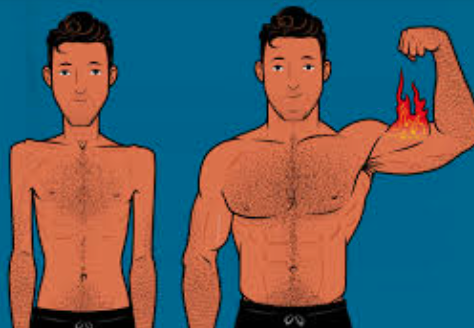
Research indicates that people lose an average of 3-8% of their muscle mass every 10 years after turning 30, with this rate increasing at 60 years of age and beyond (1). This is referred to as sarcopenia. Besides, bone density tends to decrease as well. But that doesn’t mean that this is an absolute!
As we age, maintaining muscle mass and strength becomes increasingly important for overall health and vitality. Many individuals over the age of 50 may assume that building muscle is a pursuit reserved for the younger generation, but nothing could be further from the truth. In fact, with the right mindset, exercise routine, and nutrition, it’s entirely possible for everybody to strengthen and build muscles well into their golden years.
Numerous Benefits in Building Our Muscles
Building muscle after 50 offers numerous benefits beyond just aesthetic appeal. It can enhance physical performance, stabilize joints, improve bone density, help maintain healthy hormone levels, boost metabolism, increase mobility, and even enhance mental well-being. By incorporating the appropriate exercises and adopting a balanced diet, individuals can embark on a journey to reclaim their strength, defy age-related stereotypes, and enjoy a life filled with vitality and vitality.
So, let’s defy the notion that muscle building is solely for the young, and embark on a transformative journey that proves age is just a number when it comes to building muscle and embracing a healthy, active lifestyle.
There are still many things you can do to increase your lean muscle later in life. One of them is weight training apart from eating right.

1. Engage in Weight Training to Build Muscle
Lifting weights helps you build muscle. It breaks your muscle tissue down so your body can build it up again and make it even stronger. One study even found that strength training helps stop age-related muscle decline (2). That is, for as long as the person continues to lift weights. It is worth noting that one does not have to be a heavy weight lifter from the beginning. One fundamental approach is to slowly follow a progressive resistance training program. This type of exercise program can also help avoid injury.
When you are in the strength training workout, do consider to incorporate compound exercise movements. This enable your body to work more than one muscle group at a time. It is a helpful approach if you want results but do not want to spend a lot of time at the gym. Squats with bicep curls or lunges with triceps extensions are two examples.
If you dislike weight lifting, I want to suggest some resistance exercises with your body weight. Planks are good for building muscle strength in the core muscles and biceps. Push-ups strengthen the chest and back.
2. Increase Protein Intake
Muscle fiber needs protein to grow. Some of this protein is created by the body via muscle protein synthesis. This is the process the body uses to turn amino acids into muscle protein. Increasing dietary protein helps aid protein synthesis.
According to a 2015 study, eating more protein helps “counterbalance muscle loss in older individuals” (3) It works by increasing the amino acids that are available to the body to use for creating muscle protein. This research further suggests that most older adults need more than the recommended 1.2 to 2 grams of protein daily per kilogram of body weight. This is partially due to amino acid availability declining with age. Also, seven to 12 of those grams should come from the branched-chain amino acid leucine.
Protein intake can be increased by eating more lean red meat, poultry, eggs, and dairy. If one struggle with getting more protein in their diet, a supplement can help. They can sip on a whey protein shake after their workout, giving their body the nutrients it needs to help muscles grow. Determining protein intake is an individual process. Therefore, you may want to consult a qualified nutritionist.
3. Get Enough Nutrients
Part of building muscle after 50 involves making sure the body has the nutrients it needs to good support muscle growth. One of these nutrients is vitamin D. Research indicates that having adequate levels of vitamin D helps improve muscle performance in older adults (4). It also helps with balance, thereby reducing their risk of falls.
A blood test can determine whether you need to get more vitamin D. Recently your correspondent went to her family doctor for an annual routine blood test. The blood test report highlights a low level of Vitamin D. So, besides getting about 15 minutes of morning sun, she has decided to increase vitamin D by ingesting more salmon, sardines, or tuna, mushrooms, cow’s milk, and oatmeal. Last but not least she will take calcium supplements to aid in Vitamin D’s absorption.
Training Tips to Build Muscle Mass
Building muscle after 50 is absolutely achievable with the right exercise regimen. Here are some exercises that can help you build muscle effectively:

Resistance Training
Incorporate resistance training into your routine to stimulate muscle growth. Focus on compound exercises that work multiple muscle groups simultaneously. Examples include:
- Squats: Targets the lower body muscles, including quadriceps, hamstrings, and glutes.
- Deadlifts: Works the posterior chain, including the back, glutes, and hamstrings.
- Bench Press: Engages the chest, shoulders, and triceps.
- Rows: Targets the upper back muscles.
- Overhead Press: Works the shoulders and triceps.
Dumbbell or Barbell Exercises
Utilize dumbbells or barbells for exercises such as bicep curls, tricep extensions, shoulder presses, and lunges. These exercises help to isolate specific muscles and promote muscle growth.
Bodyweight Exercises
Bodyweight exercises can be effective for building muscle and improving overall strength. Include exercises such as push-ups, pull-ups, squats, lunges, and planks in your routine.
Stability and Balance Exercises
As you age, it’s important to maintain stability and balance. Incorporate exercises such as standing on one leg, heel-to-toe walk, stretching exercises or Pilates movements to improve balance and stability.
Core Strengthening
Strong core muscles are important for overall stability and posture. Include exercises like planks, Russian twists, and bicycle crunches to strengthen your core.
Progressive Overload
Gradually increase the intensity of your workouts by increasing the weight, reps, or sets over time. This progressive overload will challenge your muscles and promote growth.
Proper Form and Technique
Pay attention to proper form and technique during exercises to prevent injuries and maximize the effectiveness of your workouts. If needed, consider working with a qualified fitness professional to ensure proper form.
Rest and Recovery
Allow muscles time to recover and rebuild by incorporating rest days into your training schedule. Aim for 48 to 72 hours of recovery between sessions targeting the same muscle groups. Remember, it’s important to listen to your body and work within your fitness level.
If you are new to exercise or have any underlying health conditions, consult with a healthcare professional. If you want some help to build muscle after 50, join a reputable fitness centre near your home or office. Furthermore, if you want to engage a personal trainer to coach or instruct you, ensure that your trainer is a qualified trainer with an international recognised certification such as International Sports Science Association (ISSA). An experience and qualified fitness trainer can design a workout plan tailored to your needs and abilities.
Contact ISSA Academy Malaysia at info@clarkhatchinternational.com
References
- Volpi, E., Nazemi, R., & Fujita, S. (2004). Muscle tissue changes with aging. Current Opinion in Clinical Nutrition and Metabolic Care, 7(4), 405–410. https://doi.org/10.1097/01.mco.0000134362.76653.b2
- Kennis, E., Verschueren, S. M., Bogaerts, A., Van Roie, E., Boonen, S., & Delecluse, C. (2013). Long-term impact of strength training on muscle strength characteristics in older adults. Archives of Physical Medicine and Rehabilitation, 94(11), 2054–2060. https://doi.org/10.1016/j.apmr.2013.06.018
- Baum, J., & Wolfe, R. (2015). The link between dietary protein intake, skeletal muscle function and health in older adults. Healthcare, 3(3), 529–543. https://doi.org/10.3390/healthcare3030529
- Dawson-Hughes, B. (2017). Vitamin D and muscle function. The Journal of Steroid Biochemistry and Molecular Biology, 173, 313–316. https://doi.org/10.1016/j.jsbmb.2017.03.018